The Stanford Prison Experiment
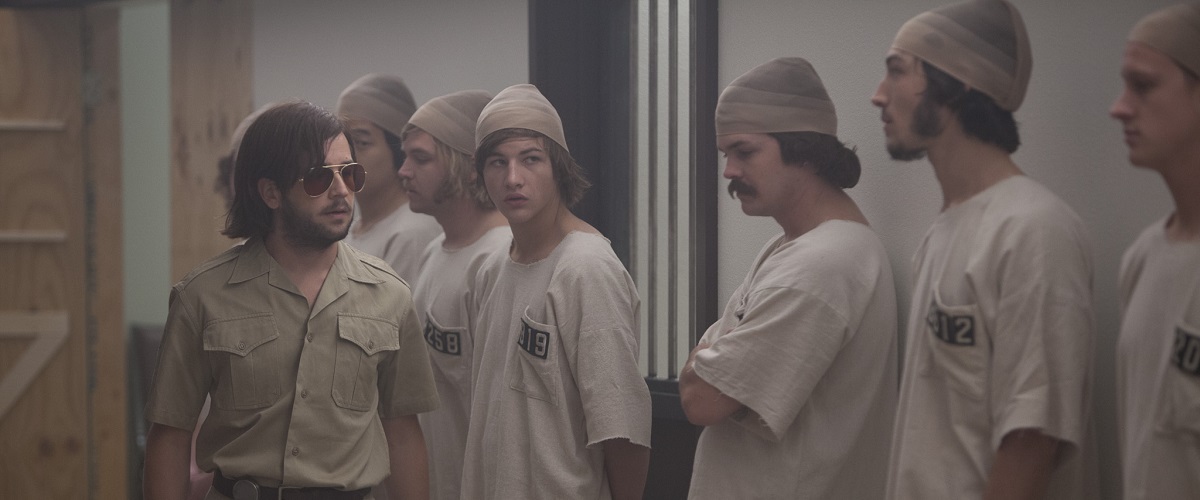
Students of high school or university psychology classes are probably familiar with the Stanford Prison Experiment. Run in 1971 at the behest of the U.S. Navy, the experiment intended to investigate the cause of conflict between guards and prisoners in military correctional facilities. Dr. Philip Zimbardo and his team chose 24 male Stanford students and divvied them up into guards and prisoners. Turning the basement of one of the student halls into a makeshift prison, Zimbardo placed his subjects under surveillance and watched as the prisoners became passive and the guards exhibited authority by way of sometimes sadistic psychological torture. Zimbardo ended the experiment 6 days into its 2-week run, mostly due to the objections of his fiancée. She felt Zimbardo had become an unhealthy part of his own experiment.
A documentary about this could potentially be fascinating, as some of the actual experiment exists on film. Unfortunately, "The Stanford Prison Experiment" is a dramatization, and no matter how much it may adhere to the well-documented specifics of Zimbardo's work, it is a massive failure. It prefers to abstract the experiment from any psychological theories or details, opting instead to merely harp on endless, repetitive scenes of prisoner abuse. One particular guard, who thinks he's Strother Martin in " Cool Hand Luke ," abuses the prisoners. The prisoners take the abuse, rebelling once or twice before becoming passive. Zimbardo glares at a TV screen doing nothing while his guards break the rules of the contract everybody signed at the outset. Repeat ad nauseum.
These scenes are supposed to shock the viewer, but they did not work for me, because I just didn't care. The film reduces the entire experiment to a Dead Teenager movie whose slasher just roughs them up. Prisoners are referred to by numbers in order to strip them of their personal identities, and the film keeps them at this level of distance. We never get to know any subject outside of brief sketches, so the victims become disposable. Despite the best efforts of the actors on both sides of the law, the film is completely clinical in its depiction, striking the same note for over 2 hours. It gets real dull, real fast.
I didn't care because this isn't remotely like an actual prison; it's a bunch of privileged kids playing dress-up for $15 a day. Even a priest Zimbardo hires as a prison chaplain tells the doctor "it's good that these privileged kids experience prison life." The actual reasons for the experiment (and its military involvement) are never expressed in Tim Talbott 's screenplay, so the priest's comment almost serves as the reason for these tests. And the film takes great pains to tell us that nobody in the experiment suffered "long term psychological damage" after it was abruptly cancelled. I'm sure someone who has experienced the harsh realities of actual prison life would feel relieved that these young men weren't scarred.
The best scene in "The Stanford Prison Experiment" deals with an actual prisoner and serves to highlight my disdain for how the film trades emotion and details for exploitative shocks. The fantastic Nelsan Ellis (last seen in " Get On Up ") plays Jesse, an ex-con brought in by Zimbardo's team as an expert witness to their proceedings. At a mock parole board hearing, Jesse rips into an inmate, treating him as inhumanely as possible while verbally shredding the inmate's explanation for why he should be paroled. After the stunned inmate is sent back to his cell, Jesse reveals that he was recreating his own parole board treatment. He tells Zimbardo that playing the role of his own tormentor "felt good, and I hated that it did." This, in a nutshell, is what the actual experiment sought to explore, that is, the nature of even the nicest human beings to commit evil. Jesse's revelation, and the psychological toll it takes on him, is more effective than anything else the film conjures up. If only the movie had spent more time interacting with the Strother Martin-wannabe's own thoughts rather than trudging him out only for sadism.
The film reduces Zimbardo to some kind of megalomaniac who doesn't know what he is doing. This makes his research seem half-assed and unethical. He watches the guards strike the prisoners (a direct violation of the rules) and the film paints him as the biggest villain of all. He challenges anyone who questions his methods and authority, and at one point, he absurdly sits in a hallway like a low-rent Charles Bronson hoping for the return of a subject who might jeopardize his research. (In the actual case, Zimbardo simply moves the prison to a location unknown by the subject.) And though his intentions are to "feminize" the prisoners by giving them "dresses" that barely hide their genitalia, "The Stanford Prison Experiment" implies that Zimbardo's sole reason for stopping the experiment was the moment when his guards forced the inmates into a gay sex pantomime. Violence and hog-tying inmates were OK, but none of that gay stuff, the movie seems to say.
Billy Crudup deserves some kind of medal for his attempt to breathe life into his one dimensional character, as do actors like Ezra Miller and Olivia Thirlby . But they are undermined by a poor script, horror movie-style music and ripe dramatizations that exist solely to make the viewer feel superior. I despise movies like this and " Compliance " because they pretend to say something profound about their scenarios but are, at heart, cynically manipulative trash designed to make audiences pat themselves on the back for not being "like those people." Had we been forced to identify with anyone, prisoner or guard, the film might have achieved the palpable discomfort of forcing us to look at ourselves. That was one of the goals of the actual Stanford Prison Experiment. This movie just wants to superficially disturb, and it's not even successful at that.


Odie Henderson
Odie "Odienator" Henderson has spent over 33 years working in Information Technology. He runs the blogs Big Media Vandalism and Tales of Odienary Madness. Read his answers to our Movie Love Questionnaire here .
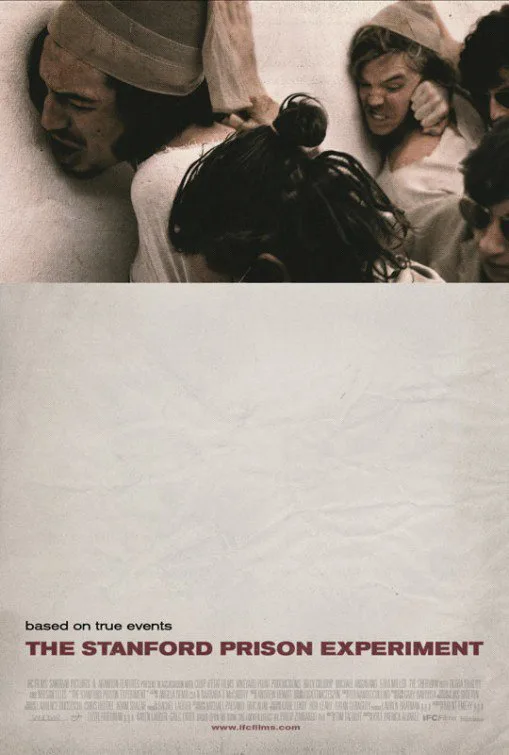
- Keir Gilchrist as John Lovett
- Tye Sheridan as Peter Mitchell - Prisoner 819
- Ezra Miller as Daniel Culp - Prisoner '8612'
- Moisés Arias as Actor
- Billy Crudup as Dr. Philip Zimbardo
- Gaius Charles as Banks
- Thomas Mann as Prisoner 416
- Michael Angarano as Christopher Archer
- Olivia Thirlby as Christina Zimbardo
- Nelsan Ellis as Jesse Fletcher
- Johnny Simmons as Jeff Jansen
- James Wolk as Penny
Director of Photography
- Jas Shelton
- Kyle Patrick Alvarez
- Tim Talbott
Leave a comment
Now playing.
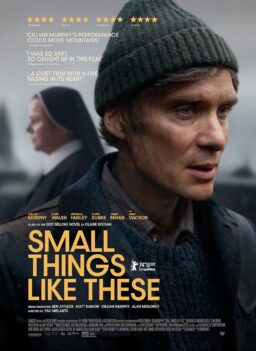
Small Things Like These
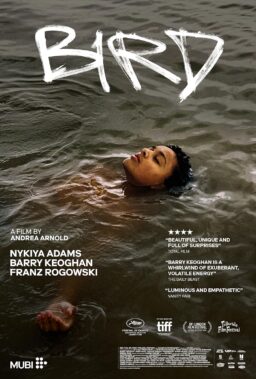
Bird (2024)

Meanwhile on Earth

Christmas Eve in Miller's Point

Stockholm Bloodbath

The Last Rifleman

Weekend in Taipei

Youth (Homecoming)

The Piano Lesson
Latest articles.

Coming of Consciousness: Tyler Taormina on Christmas Eve in Miller's Point

Apple TV’s “Silo” Returns for Daring Second Season

Black Harvest Film Festival 2024 Preview
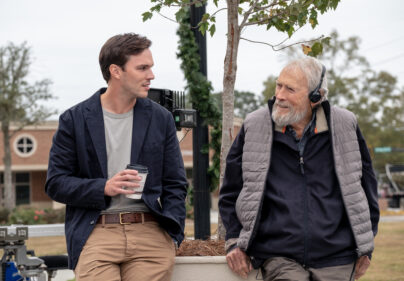
A Prophet is Without Honor in His Own Country; or, The Curious Case of Clint Eastwood
The best movie reviews, in your inbox.
The Stanford Prison Experiment
Cast & crew.
Billy Crudup
Dr. Philip Zimbardo
Michael Angarano
Christopher Archer
Moises Arias
Anthony Carroll
Nicholas Braun
Gaius Charles
Powerful depiction of shocking, harrowing real-life events.
- Reviews 101
Information
© 2015 Stanford Prison LLC
Accessibility
Copyright © 2024 Apple Inc. All rights reserved.
Internet Service Terms Apple TV & Privacy Cookie Policy Support

The Stanford Prison Experiment (2015)
R | Biography, Drama, History, Thriller
Memoir of a Snail
Play trailer, .cls-1 { fill: #ffffff; }, the stanford prison experiment.
- Billy Crudup
- Ezra Miller
- Michael Angarano
- Tye Sheridan
- Johnny Simmons
- Olivia Thirlby
- Thomas Mann
So disturbing, intense and believable that it's easy to forget we're watching a movie. — Justin Gerber, Consequence of Sound
A masterful film. Director Kyle Patrick Alvarez deserves all the praise in the world for the way he cranks up this pressure cooker script. — Jordan Hoffman, The Guardian
One of the best, most harrowing films of the year. — Brent McKnight, Cinema Blend
Chilling. A riveting, powerful, provocative film. — Kyle Smith, New York Post
Presented by IFC Films | United States | Jul 17th, 2015 | 122 MINS | R
What happens when a college psych study goes shockingly wrong? In this tense, psychological thriller based on the notorious true story, Billy Crudup stars as Stanford University professor Dr. Philip Zimbardo, who, in 1971, cast 24 student volunteers as prisoners and guards in a simulated jail to examine the source of abusive behavior in the prison system. The results astonished the world, as participants went from middle-class undergrads to drunk-with-power sadists and submissive victims in just a few days. Winner of two awards at the Sundance Film Festival, including Best Screenplay, and created with the close participation of Dr. Zimbardo himself, The Stanford Prison Experiment is a chilling, edge-of-your-seat thriller about the dark side of power and the effects of imprisonment. Featuring an extraordinary cast of rising young actors, including Ezra Miller, Olivia Thirlby, Tye Sheridan, Keir Gilchrist, Michael Angarano, and Thomas Mann.
- Kyle Patrick Alvarez
- Brent Emery
- Karen Lauder
- Lizzie Friedman
- Greg Little
- Lauren Bratman
- Tim Talbott
Waldo Salt Screenwriting Award
Sundance Film Festival
Alfred P. Sloan Feature Film Prize
Video clips & featurettes, official poster & photo gallery.
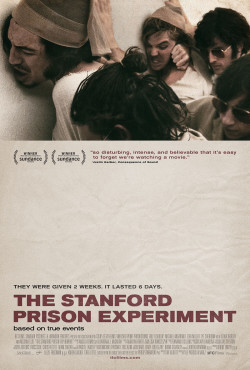
Exhibitor Resources
Contact Us for screening information or log in to the IFC Extranet for artwork, etc.
Stay up to date on #StanfordPrisonExperiment
Contact us for information on booking any of our films or log in to the IFC Films Extranet for stills, artwork, video, and more.
More Films Like This
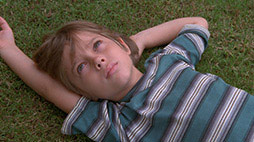
Ain't Them Bodies Saints
Now In Select Theaters & On Demand

50 Years On: What We've Learned From the Stanford Prison Experiment
The experiment generated important research into unexplored territories..
Posted August 16, 2021 | Reviewed by Tyler Woods
- What Is Shyness?
- Take our Social Anxiety Test
- Find a therapist near me
- I developed 3 new areas of research after the Stanford prison experiment (SPE): good and evil, time perspective, and shyness.
- The SPE was closed down after 6 days because the "guards" became so brutal and as Superintendent, I was too caught up in my role.
- The Heroic Imagination Project teaches people how to be Everyday Heroes and take effective actions in challenging situations.
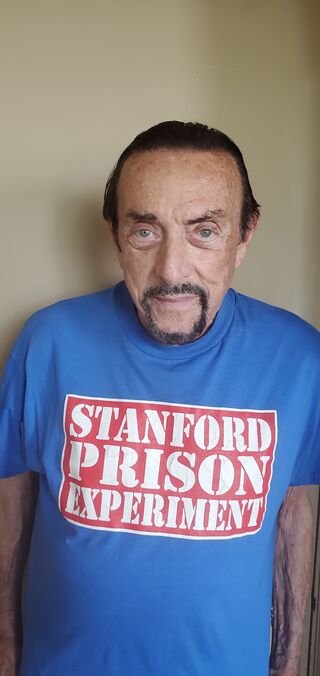
Fifty years ago this month I conducted a research experiment that could have been a blight to my career . Instead, what has become known as the Stanford prison experiment (SPE) drove me to extensively pursue the question: Why do good people do evil things? After three decades of research on this subject, I recorded my findings in The Lucifer Effect: Understanding How Good People Turn Evil (Random House, 2007).
But the SPE also led me to research three new topics that hadn’t previously been studied:
1) Heroism: Why, in difficult situations, some people heroically step forward to help others, oftentimes complete strangers, while others stand by and watch.
2) Time Perspective: The psychological time warp experienced by participants of the SPE—not knowing if it was day or night or what day it was—led to my research in people’s individual time perspectives and how these affect our lives.
3) Shyness : Rethinking shyness as a self-imposed psychological prison led me to conduct research on shyness in adults, and then create a clinic in the community designed to cure shyness.
The Experiment in a Nutshell
In August 1971, I led a team of researchers at Stanford University to determine the psychological effects of being a guard or a prisoner. The study was funded by the US Office of Naval Research as both the US Navy and the US Marine Corps were interested in the causes of conflict between military guards and prisoners. In the study, 24 normal college students were randomly assigned to play the role of guard or inmate for two weeks in a simulated prison located in the basement of the Stanford Psychology Department building. But the guards quickly became so brutal, and I had become so caught up in my role as Superintendent, that I shut down the experiment after only six days.
Challenging the Truth
There seem to be powerful silent barriers to dealing with new truths emanating from psychological laboratories and field experiments that tell us things about how the mind works, which challenge our basic assumptions. We want to believe our decisions are wisely informed, that our actions are rational, that our personal conscience buffers us against tyrannical authorities. Moreover, we want to believe in the dominating influence of our good character despite social circumstances. Yes, those personal beliefs are sometimes true, but often they are not, and rigidly defending them can get us in trouble individually and collectively. Let’s see how.

Denial and Finger Pointing
When we discover two or three ordinary American citizens administered extreme electric shocks to an innocent victim on the relentless commands of a heartless authority, we say, “no way, not me.” Yale University psychologist Stanley Milgram’s obedience to authority research has been in the public arena for decades, yet we ignore its message of the power of unjust authority in undercutting our moral conscience. Similarly, the SPE research made vivid the power of hostile situational forces in overwhelming dispositional tendencies toward compassion and human dignity. Still, many who insist on honoring the dominance of character over circumstance reject its situational power message.
In 2004, people around the world witnessed online photos of horrific actions of American Military Police guards in Iraq’s Abu Ghraib Prison against prisoners in their charge. It was portrayed as the work of a “few bad apples” according to military brass and Bush administration spokespeople. I publicly challenged this traditional focus on individual dispositions by portraying American servicemen as good apples that were forced to operate in a Bad Barrel (the Situation) created by Bad Barrel Makers (the System).
I became an expert witness in the defense of the Staff Sergeant in charge of the night shift, where all the abuses took place. In that capacity, I had personal access to the defendant, to all 1,000 photos and videos, to all dozen military investigations, and more. It was sufficient to validate my view of that prison as a replica of the Stanford prison experiment on steroids, and of my defendant, Chip Frederick, as really a Good Apple corrupted by being forced to function for 12 hours every night for many months in the worst barrel imaginable. My situation-based testimony to the military Court Martial hearings helped reduce the severity of his sentence from 15 years down to only four years.
The January 6, 2021 insurrection is a recent example of some Good Apples being corrupted by a Bad Barrel. In this case, the Bad Barrel is the insidiousness of fascism led by the former president and other fraudulent politicians as well as media personalities. These “leaders” have been generously dumping poison in the Barrel and over the Apples with lies that feed the Apples’ deepest fears.
“The Stanford Prison Experiment” Film
In 2015, The Stanford Prison Experiment was made into a film starring Billy Crudup as me and Olivia Thrilby as Christina Maslach, the whistle-blowing graduate student (whom I later married) who pointed out the experiment had gone awry and had changed me to such a degree that she didn’t know who I was anymore. Her personal challenge led me to end the study the next day. The film received two awards at the Sundance Film Festival: best screenwriting and best science feature.

The Stanford Prison Experiment movie enables viewers to look through the observation window as if they were part of the prison staff watching this remarkable drama slowly unfold, and simultaneously observe those observers as well. They are witnesses to the gradual transformations taking place, hour by hour, day by day, and guard shift by guard shift. Viewers see what readers of The Lucifer Effect book account can only imagine. As these young students become the characters inhabited in their roles and dressed in their costumes, as prisoners or guards, a Pirandellian drama emerges.
The fixed line between Good, like us, and Evil, like them, is relentlessly blurred as it becomes ever more permeable. Ordinary people soon slip into doing extraordinarily bad things to other people, who are actually just like them except for a random coin flip. Other healthy people soon get sick mentally, being unable to cope with the learned helplessness imposed on them in that unique, unfamiliar setting. They do not offer comfort to their buddies as they break down, nor do those who adopt a “good guard” persona ever do anything to limit the sadistic excesses of the cruel guards heading their shifts.
Finally, the movie also tracks the emotional changes in the lead character (me) as his compassion and intellectual curiosity get distilled and submerged over time. The initial roles of research creator and objective observer are dominated by power and insensitivity to prisoners' suffering in the new role of Prison Superintendent.
Visit the official Stanford Prison Experiment website to learn more about the experiment.
Heroic Imagination

I should add that, along with continuing research in time perspectives and time perspective therapy , my new mission in life has been to empower everyone to wisely resist negative situational forces and evil by becoming Everyday Heroes in Training. Our non-profit Heroic Imagination Project (HIP) teaches ordinary people how to stand up, speak out and take effective actions in challenging situations in their lives.

Rosemary K.M. Sword and Philip Zimbardo are the authors, along with Richard M. Sword, of The Time Cure: Overcoming PTSD with the New Psychology of Time Perspective Therapy.
- Find a Therapist
- Find a Treatment Center
- Find a Psychiatrist
- Find a Support Group
- Find Online Therapy
- United States
- Brooklyn, NY
- Chicago, IL
- Houston, TX
- Los Angeles, CA
- New York, NY
- Portland, OR
- San Diego, CA
- San Francisco, CA
- Seattle, WA
- Washington, DC
- Asperger's
- Bipolar Disorder
- Chronic Pain
- Eating Disorders
- Passive Aggression
- Personality
- Goal Setting
- Positive Psychology
- Stopping Smoking
- Low Sexual Desire
- Relationships
- Child Development
- Self Tests NEW
- Therapy Center
- Diagnosis Dictionary
- Types of Therapy

When we fall prey to perfectionism, we think we’re honorably aspiring to be our very best, but often we’re really just setting ourselves up for failure, as perfection is impossible and its pursuit inevitably backfires.
- Emotional Intelligence
- Gaslighting
- Affective Forecasting
- Neuroscience

- Movies & TV
- Featured Categories
Image Unavailable

- Sorry, this item is not available in
- Image not available
- To view this video download Flash Player

The Stanford Prison Experiment
- Prime Video $3.99 — $12.99
- Blu-ray $9.99
- DVD from $5.99
Customers who bought this item also bought

Product Description
What happens when a college psych study goes shockingly wrong? Based on the notorious true story, THE STANFORD PRISON EXPERIMENT stars Billy Crudup (Watchmen) as Stanford University professor Dr. Philip Zimbardo, who, in 1971, cast 24 student volunteers as prisoners and guards in a simulated jail to examine the source of abusive behavior in the prison system. The results astonished the world, as participants went from middle-class undergrads to drunk-with-power sadists and submissive victims in just a few days. Featuring an extraordinary cast including Ezra Miller, Olivia Thirlby, Tye Sheridan, Keir Gilchrist, Michael Angarano, and Thomas Mann, and created with the close participation of Dr. Zimbardo himself, THE STANFORD PRISON EXPERIMENT is a chilling, edge-of-your-seat thriller about the dark side of power and the effects of imprisonment.
Product details
- Is Discontinued By Manufacturer : No
- MPAA rating : NR (Not Rated)
- Product Dimensions : 0.7 x 7.5 x 5.4 inches; 2.4 ounces
- Item model number : 35225379
- Director : Kyle Patrick Alvarez
- Media Format : Widescreen, Multiple Formats, NTSC, Color
- Run time : 2 hours and 2 minutes
- Release date : November 17, 2015
- Actors : Olivia Thirlby, Ezra Miller, Nelsan Ellis, Matt Bennett, Ki Hong Lee
- Studio : IFC Independent Film
- ASIN : B013W7LTL6
- Number of discs : 1
- #5,296 in Drama DVDs
Customer reviews
- 5 star 4 star 3 star 2 star 1 star 5 star 69% 15% 9% 3% 4% 69%
- 5 star 4 star 3 star 2 star 1 star 4 star 69% 15% 9% 3% 4% 15%
- 5 star 4 star 3 star 2 star 1 star 3 star 69% 15% 9% 3% 4% 9%
- 5 star 4 star 3 star 2 star 1 star 2 star 69% 15% 9% 3% 4% 3%
- 5 star 4 star 3 star 2 star 1 star 1 star 69% 15% 9% 3% 4% 4%
Customer Reviews, including Product Star Ratings help customers to learn more about the product and decide whether it is the right product for them.
To calculate the overall star rating and percentage breakdown by star, we don’t use a simple average. Instead, our system considers things like how recent a review is and if the reviewer bought the item on Amazon. It also analyzed reviews to verify trustworthiness.
Reviews with images

VERY disappointing

- Sort by reviews type Top reviews Most recent Top reviews
Top reviews from the United States
There was a problem filtering reviews right now. please try again later..
Top reviews from other countries
- Amazon Newsletter
- About Amazon
- Accessibility
- Sustainability
- Press Center
- Investor Relations
- Amazon Devices
- Amazon Science
- Sell on Amazon
- Sell apps on Amazon
- Supply to Amazon
- Protect & Build Your Brand
- Become an Affiliate
- Become a Delivery Driver
- Start a Package Delivery Business
- Advertise Your Products
- Self-Publish with Us
- Become an Amazon Hub Partner
- › See More Ways to Make Money
- Amazon Visa
- Amazon Store Card
- Amazon Secured Card
- Amazon Business Card
- Shop with Points
- Credit Card Marketplace
- Reload Your Balance
- Amazon Currency Converter
- Your Account
- Your Orders
- Shipping Rates & Policies
- Amazon Prime
- Returns & Replacements
- Manage Your Content and Devices
- Recalls and Product Safety Alerts
- Registry & Gift List
- Conditions of Use
- Privacy Notice
- Consumer Health Data Privacy Disclosure
- Your Ads Privacy Choices
Log in or sign up for Rotten Tomatoes
Trouble logging in?
By continuing, you agree to the Privacy Policy and the Terms and Policies , and to receive email from the Fandango Media Brands .
By creating an account, you agree to the Privacy Policy and the Terms and Policies , and to receive email from Rotten Tomatoes and to receive email from the Fandango Media Brands .
By creating an account, you agree to the Privacy Policy and the Terms and Policies , and to receive email from Rotten Tomatoes.
Email not verified
Let's keep in touch.

Sign up for the Rotten Tomatoes newsletter to get weekly updates on:
- Upcoming Movies and TV shows
- Rotten Tomatoes Podcast
- Media News + More
By clicking "Sign Me Up," you are agreeing to receive occasional emails and communications from Fandango Media (Fandango, Vudu, and Rotten Tomatoes) and consenting to Fandango's Privacy Policy and Terms and Policies . Please allow 10 business days for your account to reflect your preferences.
OK, got it!
- About Rotten Tomatoes®
- Login/signup
Movies in theaters
- Opening This Week
- Top Box Office
- Coming Soon to Theaters
- Certified Fresh Movies
Movies at Home
- Fandango at Home
- Prime Video
- Most Popular Streaming Movies
- What to Watch New
Certified fresh picks
- 93% Heretic Link to Heretic
- 94% Small Things Like These Link to Small Things Like These
- 82% Bird Link to Bird
New TV Tonight
- 100% Like Water for Chocolate: Season 1
- 77% Citadel: Honey Bunny: Season 1
- 100% Until I Kill You: Season 1
- 100% Outer Banks: Season 4
- 100% Arcane: League of Legends: Season 2
- -- Inspector Ellis: Season 1
- -- Game Changers: Season 1
- -- Eat, Slay, Love: Season 1
- -- Countdown: Paul vs. Tyson: Season 1
- -- Bank Under Siege: Season 1
Most Popular TV on RT
- 89% The Day of the Jackal: Season 1
- 95% The Penguin: Season 1
- 94% The Diplomat: Season 2
- 83% Agatha All Along: Season 1
- 77% Disclaimer: Season 1
- 100% Lioness: Season 2
- -- Don't Come Home: Season 1
- Best TV Shows
- Most Popular TV
Certified fresh pick
- 90% Hysteria!: Season 1 Link to Hysteria!: Season 1
- All-Time Lists
- Binge Guide
- Comics on TV
- Five Favorite Films
- Video Interviews
- Weekend Box Office
- Weekly Ketchup
- What to Watch
All A Nightmare on Elm Street Movies Ranked
Best TV Series on Disney+ (November 2024)
What to Watch: In Theaters and On Streaming.
Awards Tour
Nosferatu First Reactions: A Devilishly Seductive, Deeply Chilling Horror Masterpiece
TV Premiere Dates 2024
- Trending on RT
- Wicked Livestream
- Holiday Programming Guide
- Nosferatu First Reactions
- Verified Hot Movies
Season 1 – The Stanford Prison Experiment: Unlocking the Truth
Cast & crew.
Alex Braverman
Executive Producer
Cristina Costantini
Juliette Eisner
Darren Foster
Jennifer Wood
The Stanford Prison Experiment: Unlocking the Truth — Season 1
Season info.

The Stanford Prison Experiment: Unlocking the Truth
A groundbreaking investigation of the infamous psychology study uncovers never-before-heard truths and unravels its long-held narrative. more
A groundbreaking investigation of the infamous psychology study u ... More
Stream thousands of shows and movies, with plans starting at $9.99/month.
Hulu free trial available for new and eligible returning Hulu subscribers only. Cancel anytime. Additional terms apply.
A groundbreaking investigation of the infamous psychology study uncovers never-before-heard truths and unravels its long-held narrative.
Series Premiere November 2024
SIGN UP NOW

Stanford Prison Experiment: Unlocking the Truth - Trailer
About this Show
@media screen and (min-width: 375px){.css-fuu2mr{font-family:"Graphik Web",sans-serif;font-size:14px;font-weight:600;line-height:1;letter-spacing:0.6px;text-transform:uppercase;}}@media screen and (min-width: 1440px){.css-fuu2mr{font-family:"Graphik Web",sans-serif;font-size:18px;font-weight:600;line-height:1;letter-spacing:0.6px;text-transform:uppercase;}} You May Also Like

Sports Add-on
Español Add-on
Entertainment Add-on
Select Your Plan
Hulu streaming library with tons of episodes and movies
Endless entertainment with disney+, no ads in hulu streaming library, no ads on disney+, download and watch on hulu, download and watch on disney+, available add-ons.
Along with Stanford news and stories, show me:
- Student information
- Faculty/Staff information
We want to provide announcements, events, leadership messages and resources that are relevant to you. Your selection is stored in a browser cookie which you can remove at any time using “Clear all personalization” below.
Philip G. Zimbardo, one of the world’s most renowned psychologists, died Oct. 14 in his home in San Francisco. He was 91.
Broadly, Zimbardo’s research explored how environments influence behavior. He is most known for his controversial 1971 study, the Stanford Prison Experiment, with W. Curtis Banks, Craig Haney, and David Jaffe. The study, intended to examine the psychological experiences of imprisonment, revealed the shocking extent to which circumstances can alter individual behavior. To this day, it is used as a case study in psychology classes to highlight both the psychology of evil as well as the ethics of doing psychological research with human subjects.
Yet Zimbardo’s research went far beyond the prison experiment. In a career that spanned over five decades, Zimbardo examined topics including persuasion, attitude change, cognitive dissonance, hypnosis, cults, alienation, shyness, time perspective, altruism, and compassion.
“Phil Zimbardo is one of the most prolific and influential psychologists of his generation – a true pioneer of the field of social psychology,” said Claude Steele, the Lucie Stern Professor in the Social Sciences, Emeritus, and professor of psychology. “Virtually all of Phil’s research shows how important phenomena of real-life human behavior can be studied scientifically. For a young science like social psychology, this has been an especially important contribution.”
Situational forces: Stanford Prison Experiment
Zimbardo first received national attention for his 1969 study that examined the causes of vandalism. He believed that anonymity and a lack of community could lead to antisocial behavior.
Zimbardo then examined the influence of the situation on human behavior in his now-notorious Stanford Prison Experiment. While he wanted to know more about the dynamics of prison life, Zimbardo was particularly interested in the influence of social roles on human behavior.
“Most people go about their daily life assuming that they have more control over their behavior than they actually do,” said Zimbardo in a 1971 Stanford News Service press release written at the onset of the experiment. He went on: “We are often unaware of the tremendous power which social situations exert upon us to shape, guide, and manipulate our behavior.”
In the study, Zimbardo and a team of Stanford graduate students created a mock prison in the basement of the Department of Psychology building. Some two dozen participants – young, healthy college-aged men – were recruited to spend two weeks in the prison as either prisoners or guards. (Roles were decided by a coin toss.)
Zimbardo was the prison superintendent – a role he was criticized for assuming because he was no longer a neutral observer but an active participant in the study.
As the experiment progressed, conditions rapidly deteriorated, and the line between role-playing and reality collapsed. The outcome, as Zimbardo later acknowledged, was “ shocking and unexpected ” and “ out-of-control .” Some guards became tyrannical and abusive in their behavior toward prisoners. For the prisoners, the experience led to acute anxiety, emotional depression, crying, and rage.
The experiment, intended to last two full weeks, was shut down after six days due to the psychological abuses that transpired.

Philip Zimbardo in 1994 | L.A. Cicero
Shyness as imprisonment
Zimbardo saw aspects of prison behavior mirrored in other areas of life, from schools to marriages to even emotions like shyness, which he studied after the Stanford Prison Experiment.
In an article he co-authored in 1975 , Zimbardo described how “shyness becomes a form of imprisonment, in which the person plays both the role of guard who constantly enforces restrictive rules and the role of prisoner who sheepishly follows them (and is thus not respected by the guard).”
He founded the Stanford Shyness Clinic and wrote prolifically on the topic, and in 1977 he authored Shyness: What It Is, What To Do About It . That same year, Newsweek described Zimbardo’s research into this topic as “pioneering,” and two decades later, he was credited with launching a whole new area of psychological study .
Monsters and heroes
Zimbardo was also considered one of the leading experts on the bystander effect – the theory that in the presence of others, individuals are less likely to step in and help someone in need. Much like the Stanford Prison Experiment, Zimbardo attributed behavior to situational and systemic forces.
Zimbardo’s pursuit of understanding how external forces shape human behavior led him to also explore mind control and the appeal of cults, including the Peoples Temple and its leader Jim Jones, who orchestrated what is now known as the Jonestown Massacre.
While curious about how situations can draw out the worst in people, Zimbardo also wondered about how they can bring out the best. He believed that inside everyone there exists an “ordinary hero.” In a 2006 news article Zimbardo co-authored with Zeno Franco , he asked: “Is it also possible that heroic acts are something that anyone can perform, given the right mindset and conditions?”
The question inspired Zimbardo to establish the Heroic Imagination Project , a nonprofit organization that seeks to prepare people for a moment to help others in a time of need.
Personal life, professional accomplishments
Philip George Zimbardo was born March 23, 1933, in New York City.
He grew up in poverty in the Bronx – an upbringing he said influenced his outlook. He was the eldest of four children.
In high school, he established a lifelong friendship with fellow classmate Stanley Milgram , who also went on to become a well-known psychologist.
Zimbardo attended Brooklyn College and went on to do his graduate work in psychology at Yale University where he earned a master’s degree in experimental psychology in 1955 and a doctorate in social psychology in 1959.
Zimbardo joined the Stanford faculty in 1968 after having taught at New York University and Columbia University. He was known for his inspiring teaching and mentorship.
“Phil was a highly decorated teacher,” said Mark Lepper, the Andrew Ray Lang Professor of Psychology, Emeritus, and former chair of the Department of Psychology. “In quarters when he taught Introduction to Psychology , lines formed around the Main Quad with students wanting to take his course.”
Another colleague, Ewart Thomas, professor emeritus of psychology and former dean of the School of Humanities and Sciences , noted that Zimbardo was “famous for inspiring many of his students to pursue research and teaching careers in which they, like their mentor, were recognized for their distinguished teaching.”
In 2002, he was elected president of the American Psychological Association, and in 2012, the association awarded him its Gold Medal Award for Life Achievement in the Science of Psychology. Among his many awards are the 2006 Havel Foundation Prize for his lifetime of research on the human condition and the 2015 Kurt Lewin Award for his contributions to the social sciences.
Zimbardo retired in 2003. The Stanford Alumni Association named Zimbardo the 2007 recipient of the Richard W. Lyman Award for exceptional volunteer service to the university.
Zimbardo is survived by his wife of 52 years, Christina Maslach Zimbardo; his son Adam (C. Jezzie, Jessi) from his first marriage to the late Rose Zimbardo and daughters Zara (Patrick Reinsborough) and Tanya (Michael Doyle); and four grandchildren he adored: Clay Doyle, Philip and Victoria Zimbardo, and Taylor Epstein-Bliss.
For more information
In lieu of flowers, donations in Zimbardo’s name can be made to the nonprofits Heroic Imagination Project and the Social Psychology Network . The Zimbardo family invites sharing tributes on Zimbardo’s Legacy web page and visiting philipzimbardo.com . Learn more about Zimbardo in his own words through his interview with the Stanford Oral History Project. Stanford Libraries houses his papers .
Media contact

COMMENTS
The Stanford Prison Experiment: Directed by Kyle Patrick Alvarez. With Billy Crudup, Michael Angarano, Moises Arias, Nicholas Braun. In 1971, twenty-four male students are selected to take on randomly assigned roles of prisoners and guards in a mock prison situated in the basement of the Stanford psychology building.
The Stanford Prison Experiment is a 2015 American docudrama psychological thriller film directed by Kyle Patrick Alvarez, written by Tim Talbott, and starring Billy Crudup, Michael Angarano, Ezra Miller, Tye Sheridan, Keir Gilchrist, Olivia Thirlby, and Nelsan Ellis.The plot concerns the 1971 Stanford prison experiment, conducted at Stanford University under the supervision of psychology ...
As chillingly thought-provoking as it is absorbing and well-acted, The Stanford Prison Experiment offers historical drama that packs a timelessly relevant punch. Read Critics Reviews. TOP CRITIC ...
The Stanford prison experiment (SPE) was a psychological experiment performed during August 1971. It was a two-week simulation of a prison environment that examined the effects of situational variables on participants' reactions and behaviors. Stanford University psychology professor Philip Zimbardo managed the research team who administered ...
Unfortunately, "The Stanford Prison Experiment" is a dramatization, and no matter how much it may adhere to the well-documented specifics of Zimbardo's work, it is a massive failure. It prefers to abstract the experiment from any psychological theories or details, opting instead to merely harp on endless, repetitive scenes of prisoner abuse.
Now Playing in Select Theaters & On Demand.Experience the Experiment: http://www.stanfordprisonexperimentfilm.com/Starring: Olivia Thirlby, Ezra Miller, Jess...
In this tense, psychological thriller based on the notorious true story, Billy Crudup stars as Stanford University professor Dr. Philip Zimbardo, who, in 1971, cast 24 student volunteers as prisoners and guards in a simulated jail to examine the source of abusive behavior in the prison system. The results astonished the world, as participants ...
Winner of two awards at the Sundance Film Festival, including Best Screenplay, and created with the close participation of Dr. Zimbardo himself, The Stanford Prison Experiment is a chilling, edge-of-your-seat thriller about the dark side of power and the effects of imprisonment. Featuring an extraordinary cast of rising young actors, including ...
The Stanford Prison Experiment Trailer 1 (2015) Ezra Miller Thriller Movie HD [Official Trailer]
Synopsis. The Stanford prison experiment was ostensibly a psychological study of human responses to captivity and its behavioral effects on both authorities and inmates in prison. It was conducted in 1971 by a team of researchers led by Philip Zimbardo of Stanford University. Undergraduate volunteers played the roles of both guards and ...
Official Trailer. It is the summer of 1971. Dr. Philip Zimbardo launches a study on the psychology of imprisonment. Twenty-four male undergraduates are randomly assigned to be either a guard or a prisoner. Set in a simulated jail, the project unfolds. The participants rapidly embody their roles -- the guards become power-hungry and sadistic ...
The Stanford Prison Experiment isn't so much a period thriller as it is a modern horror in '70s clothing, vividly confronting its audience with the depths the human soul can plunge to, given the ...
A simulated prison experiment at Stanford University has dark res... More. Starring: Billy CrudupMichael AngaranoMoises Arias. Director: Kyle Patrick Alvarez. R Drama History Movie 2015. hd. Add Paramount+ with SHOWTIME to any Hulu plan for an additional $12.99/month*. START YOUR FREE TRIAL.
In this psychological thriller based on the notorious true story, Billy Crudup stars as a Stanford University professor who cast 24 student volunteers as prisoners and guards in a simulated jail with astonishing results. 2,429. IMDb 6.8 2 h 1 min 2015 X-Ray R. Suspense • Drama • Anxious • Gritty.
Welcome to the official Stanford Prison Experiment website, which features extensive information about a classic psychology experiment that inspired an award-winning movie, New York Times bestseller, and documentary DVD. The Stanford Prison Experiment - Official Trailer I HD I IFC Films - YouTube.
Winner of two awards at the Sundance Film Festival, including Best Screenplay, and created with the close participation of Dr. Zimbardo himself, The Stanford Prison Experiment is a chilling, edge-of-your-seat thriller about the dark side of power and the effects of imprisonment. Featuring an extraordinary cast of rising young actors, including ...
In 2015, The Stanford Prison Experiment was made into a film starring Billy Crudup as me and Olivia Thrilby as Christina Maslach, the whistle-blowing graduate student (whom I later married) who ...
Movie Review: The Stanford Prison Experiment "The Stanford Prison Experiment" masterfully recreates the true story of a 1971 experiment led by Professor Zimbardo, exploring the consequences of imprisonment. The experiment, cut short due to alarming participant behavior, delves into the dark depths of human psychology and male sadism. ...
ABOUT. Guaranteed to stimulate critical thinking and discussion, the film features archival footage, flashbacks, post-experiment interviews with the prisoners and guards, and comparisons with real prisons. It documents the surprise arrests by city police and vividly shows the pathology that developed among participants, forcing the two-week ...
Episode 1 The Hallway Looking into the journey and the story behind the notorious Stanford Prison Experiment, as told by its prisoners and guards. Episode 2 The Unraveling Secrets that unravel Dr ...
Start your free trial to watch The Stanford Prison Experiment: Unlocking the Truth and other popular TV shows and movies including new releases, classics, Hulu Originals, and more. It's all on Hulu. A groundbreaking investigation of the infamous psychology study uncovers never-before-heard truths and unravels its long-held narrative.
He is most known for his controversial 1971 study, the Stanford Prison Experiment, with W. Curtis Banks, Craig Haney, and David Jaffe. The study, intended to examine the psychological experiences ...